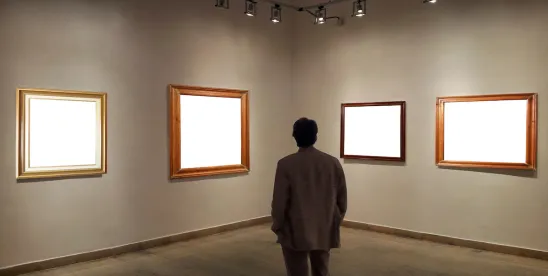The US Court of Appeals for the Federal Circuit clarified that while applicant-admitted prior art (AAPA) may be cited as evidence of general background knowledge in inter partes review (IPR) proceedings, it cannot serve as the basis for an IPR ground. The Court also confirmed that the petitioner had Article III standing to cross-appeal based on concrete plans for future activity. Shockwave Medical, Inc. v. Cardiovascular Systems, Inc., Case No. 23-1864 (Fed. Cir. July 14, 2025) (Lourie, Dyk, Cunningham, JJ.)
Shockwave Medical owns a patent directed to treating atherosclerosis using a balloon catheter in combination with shockwaves generated by electrodes and a pulse generator. The patent specification acknowledged that “over-the-wire angioplasty balloon catheters” were well known in the art. Cardiovascular Systems, Inc. (CSI) filed an IPR petition asserting that it would have been obvious to modify a European patent application with the angioplasty balloon catheter disclosed in the AAPA.
The Patent Trial & Appeal Board found all but one claim unpatentable as obvious, relying on the AAPA solely as evidence of background knowledge. Both parties appealed.
Shockwave challenged the Board’s reliance on the AAPA, arguing that 35 U.S.C. § 311(b) prohibits using AAPA as a basis for an IPR petition. The Federal Circuit disagreed, reaffirming its prior decisions in Qualcomm I and Qualcomm II. In Qualcomm I, the Court explained that AAPA cannot be the basis of a ground in an IPR petition but can be evidence of background knowledge. In Qualcomm II, the Court found that the Board erred in determining that the use of AAPA was proper when the petitioner expressly included AAPA in one of its grounds. Relying on these decisions, the Court explained that while AAPA cannot form the basis of a ground in an IPR petition, it may be used to demonstrate the general knowledge of a person of ordinary skill in the art and to supply missing claim limitations.
Shockwave pointed to a table in the Board’s final written decision listing AAPA under “reference(s)/basis” as evidence that the Board improperly relied on AAPA as a ground. The Federal Circuit rejected this argument, distinguishing Qualcomm II and emphasizing that the petitioner, not the Board, defines the grounds for review. Because CSI did not rely on AAPA as a ground, its use was permissible.
CSI cross-appealed the Board’s finding that one claim was not obvious. Shockwave challenged CSI’s standing, but the Federal Circuit found that CSI had Article III standing because it had concrete plans to begin clinical trials and because of Shockwave’s public statements suggesting it would assert the patent. The Court concluded that these facts created a substantial risk of future infringement.
On the merits, the Federal Circuit agreed with CSI that the Board erred by failing to consider the prior art as a whole. The Court reiterated that the obviousness inquiry requires evaluating the combined teachings of the prior art, not individual references in isolation. Finding no evidence to support the Board’s conclusion, the Court reversed the Board’s decision as to the remaining claim.
Practice note: Petitioners should avoid presenting AAPA as an explicit ground in IPR petitions. However, AAPA remains a valuable tool for establishing the general knowledge of a skilled artisan and may be used to fill in gaps in the prior art.



 />i
/>i

